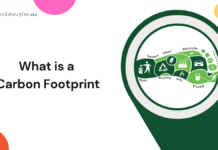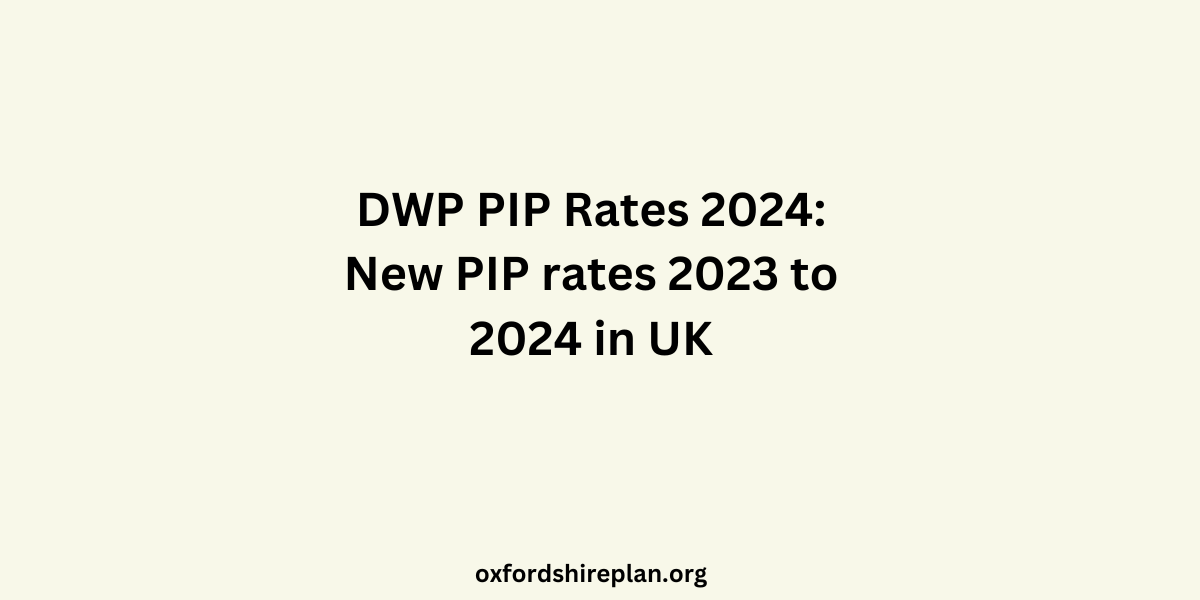In April, the rates for some DWP disability benefits increased by 10.1% in-line with inflation and the triple lock to assist the families to manage the increasing cost of living, including Personal Independence Payment (PIP).
We aim to discuss the PIP rates for 2023/2024, the rate of increase, eligibility, the application process, and also how other benefits have received the payment increases.
Thus, with these increases in PIP rates, you could now receive more than £700 a month! Over three million individuals benefit from the PIP in the United Kingdom.
Contents
- What is PIP?
- PIP Rates For 2023/2024
- Increases in PIP Rates are expected In 2023
- What will the PIP be in the year 2024/2025?
- Who Is Eligible For PIP?
- How To Apply For PIP
- The Benefit Cap
- Adult Disability Payment
- Daily living part
- Mobility part
- Attendance Allowance
- DLA/CDP
- Mobility Component
- Care component
- People May Ask
- What is the PIP?
- What is the growth rate of the PIP rates in 2023?
- Who is eligible for PIP?
- What is the process of applying for the PIP?
- What is the projected PIP for the 2024-25?
What is PIP?
If you have a disease, a disability, or any mental health problem, you are eligible to receive the Personal Independence Payment (PIP) as extra money to help with the daily life. It is available for people between 16 and the State Pension who require long-term care or are unable to move around because of an illness or condition.
If you have a serious physical or mental health condition, or a disability, or problems performing some daily activities, PIP can help with the added living costs. It follows that PIP is divided into two parts: everyday life and mobility.
PIP is not means-tested and is tax-free. In other words, it does not matter whether you are employed or not, or how much money you earn or how much you have saved; it is still possible to get it. You can get it with many other benefits or the Employment and Support Allowance.
PIP Rates For 2023/2024
Personal Independence Payment (PIP) comprises two components:
- Daily living: If you require any assistance with the daily activities
- Mobility – If you need help with your mobility
Every one of these elements has a standard and advanced rate depending on the level of your requirements.
In the case of a PIP claim, you will be evaluated by a medical professional to determine your level of need and the which rate(s) you may be eligible for. You may qualify for either the elements or only one of the elements.
10.1% inflation rate was observed in the PIP rates for the year 2023/2024. In 2023/2024, the daily living component of PIP is £101.75 for the enhanced rate and £68.10 for the standard rate. The mobility element has a value of £71.00 for the increased rate and also £26.90 for the regular rate.
Wrapping up, with the rise in the inflation during April 2023, the PIP rates rose by 10.1%. The increased rate of £101.75 and the standard rate of £68.10 is the new daily living component of the Personal Independence Payment as of the year 2023. The increased rate’s mobility element is now £71.00, and the basic rate’s mobility component is now £26.90.
If the 6.7% uprating is approved, the individuals receiving PIP benefits and the other benefits will experience an increase in April 2024. It is estimated that the daily living component will rise to about £72.66 at the normal rate and £108.57 at the enhanced rate in 2024. The mobility element is expected to increase to £28.70 for the standard rate and to £75.73 for the enhanced rate.
Please note that the prices given above are only estimates and may change. However, for more accurate information, you will have to wait a little longer because the government might increase the benefit rates by a different amount.
Increases in PIP Rates are expected In 2023
In April 2023, the Personal Independence Payment (PIP) increased by a 10.1%, which is in line with the inflation. All DWP and HMRC benefits were subjected to this 10.1% increase.
This led to the following increases in PIP rates:
- Improved daily living component costs = £9.35
- Daily living standard component is equal to £6.25
- Enhanced mobility component = £6.50
- Standard mobility component = £2.45
Note: If you are eligible for the 2023/2024 enhanced PIP daily living and mobility components, you’ll receive £172.75 per week, £748.53 per each month, and £8,983 per year. This amounts to an an additional £15.85 per week, £68.63 per month and £824.20 per annum.
Related Articles
What will the PIP be in the year 2024/2025?
In November’s Autumn Statement, the government announced that some DWP benefits would increase by a further 6.7% from April 2024, including the Personal Independence Payment.
As a result, PIP will see the following increases from April 2024:
- Weekly Rates- The Standard Daily Living rate will rise from £68.10 to £72.65, whereas the Enhanced Daily Living rate will increase from £101.75 to £108.55
- Mobility- The weekly standard rate will rise from £26.90 to £28.70, and the enhanced rate will rise from £71.00 to £75.75.
Note: From April 2024, if you meet the criteria for the enhanced daily living and mobility components of PIP, you will receive a £184.30 a week, a £798.63 a month and a £9,583.60 a year.
Who Is Eligible For PIP?
You must be over 16 but you must also be under the State Pension age to qualify for Personal Independence Payment (PIP).
You must also have a medical condition or a disability which makes everyday living and/or traveling more difficult. You should have suffered from these problems for a minimum of three months, and they should be expected to remain for another nine months (unless you are seriously ill with a life expectancy of six months or less).
More frequently, individuals who need assistance in ADLs also require more personal care such as feeding, washing, dressing, undressing, medication administration, and also communication.
Moreover, If you are over 16 but are below the State Pension Age, you may be eligible for a new claim for the Personal Independence Payment. Moreover, you also have to be disabled or have a medical condition that makes the everyday living more challenging. These problems must have been bothering you for at least three months, and you should expect that they will not disappear for the next nine months.
If you are above the current State Pension age of 66, you can also claim an Attendance Allowance. Moreover, you can claim a new payment if you were eligible for PIP the year before the State Pension age and also received it.
NOTE: PIP is available to the residents of England, Wales, or the Northern Ireland. In Scotland, you should apply for the Adult Disability Payment instead.
How To Apply For PIP
If you want to start a new PIP claim, call the Department for Work and Pensions (DWP) on 0800 917 2222. If you are on the line, you can have someone else also make the call on your behalf.
Second, a form will be sent to you for the completion. After sending this form, you will be asked to come for an assessment (may be in the person or online). Your health or social care provider may also be required to provide some additional information.
Based on this evaluation, you will be graded based on your competencies in undertaking some of the tasks. This score will dictate whether you qualify and the amount you are entitled to under the PIP. You will receive this score in a letter telling you whether your claim has been accepted or not.
You may have to wait for up to four months to file a claim for Personal Independence Payment before you are paid. However, the PIP payments are not backdated; they start when you make the claim, which covers the time taken to process it at the Department for Work and Pensions. Call the DWP representatives at 0800 917 2222 to start a new PIP claim.
People suffering from a wide range of medical conditions could be eligible for PIP payments, which makes it very difficult to establish whether you can qualify for such a benefit. The PIP is based on the degree of assistance you need as a result of your condition affecting your health and not on the condition you have or the medications you take.
The Benefit Cap
The Benefit Cap is the maximum amount of benefits you can get if you are of the working age. As with disability benefits, this cap increased with inflation by 10.1% in the April 2023. However, this cap varies slightly based on your individual situation and whether or not you reside within or outside of the Greater London.
The Benefit Cap saw the following increases from 2022/23 to 2023/24:
| Location | Household Type | 2022/2023 (£) | 2023/2024 (£) | Increase (£) |
|---|---|---|---|---|
| Greater London | Couples (with or without children) or single claimants with a child of qualifying age | 23,000.00 | 25,323.00 | 2,323.00 |
| Greater London | Single adult households without children | 15,410.00 | 16,967.00 | 1,557.00 |
| Rest of Great Britain | Couples (with or without children) or single claimants with a child of qualifying age | 20,000.00 | 22,020.00 | 2,020.00 |
| Rest of Great Britain | Single adult households without children | 13,400.00 | 14,753.00 | 1,353.00 |
What Other Advantages of Rates Have Increased for the 2023/2024?
Inflation increased several benefits by a 10.1% for the 2023/2024 financial year. These changes took place during the 10th of April, 2023.
In the table below, we have included the disability payment rate changes for the year 2023-24 as determined by the DWP. Many of these payment amounts are almost the same.
Adult Disability Payment
This is almost the same as the Personal Independence Payment and is only applicable to those who live in Scotland.
Daily living part
| Rate | 2023/2024 (£) | 2022/2023 (£) | Increase (£) |
|---|---|---|---|
| Standard Rate | 68.10 | 61.85 | 6.25 |
| Enhanced Rate | 101.75 | 92.40 | 9.35 |
Mobility part
| Rate | 2023/2024 (£) | 2022/2023 (£) | Increase (£) |
|---|---|---|---|
| Standard Rate | 26.90 | 24.45 | 2.45 |
| Enhanced Rate | 71.00 | 64.50 | 6.50 |
Attendance Allowance
The Attendance Allowance is for the people over State Pension age and is requiring assistance or supervision due to a disability or medical condition. If you have to pay for your care in a care home, then you can receive the Attendance Allowance.
The following are the 2023 Attendance Allowance rates:
| Rate | 2022-23 (£) | 2023-24 (£) | Increase (£) |
|---|---|---|---|
| Higher rate | 92.40 | 101.75 | 9.35 |
| Lower rate | 61.85 | 68.10 | 6.25 |
DLA/CDP
Currently, PIP is replacing DLA. In the meantime, Child Disability Payment is replacing the DLA in Scotland for those under 16. All these advantages have the same payment rates. The 2023 DLA rates are given below:
| Level of Help Needed | Weekly Rate (£) |
|---|---|
| Help for some of the day or with preparing cooked meals | 26.90 |
| Frequent help or constant supervision during the day, supervision at night or someone to help you while on dialysis | 68.10 |
| Help or supervision throughout both day and night, or a medical professional has said you might have 12 months or less to live | 101.75 |
Mobility Component
| Level of Help Needed | Weekly Rate (£) |
|---|---|
| Guidance or supervision outdoors | 26.90 |
| You have any other, more severe, walking difficulty | 71.00 |
Care component
| Level of Help Needed | Weekly Rate |
|---|---|
| Help for some of the day or with preparing cooked meals | £26.90 (Lowest rate) |
| Frequent help or constant supervision during the day, supervision at night or someone to help you while on dialysis | £68.10 (Middle rate) |
| Help or supervision throughout both day and night, or a medical professional has said you might have 12 months or less to live | £101.75 (Highest rate) |
People May Ask
What is the PIP?
PIP is an allowance for those individuals who may require the support in daily living or mobility due to a long-term condition or disability. It comprises two components: Daily Living and Mobility.
What is the growth rate of the PIP rates in 2023?
Inflation was reflected by the 10.1% increase in the PIP rates in April of 2023.
Who is eligible for PIP?
Your ability to receive PIP is not dependent on the condition you have, but it is dependent on how the condition affects you. A heath professional will determine the amount of the aid that you require.
What is the process of applying for the PIP?
If you want to request PIP, you can call the Department for Work and Pensions (DWP) for assistance. You will be evaluated by a health professional to determine your qualification.
What is the projected PIP for the 2024-25?
The Government announced that PIP would be subject to increases from the April 2024.

I am a passionate technology and business enthusiast, constantly exploring the intersection where innovation meets entrepreneurship. With a keen eye for emerging trends and a deep understanding of market dynamics, I provide insightful analysis and commentary on the latest advancements shaping the tech industry.
















